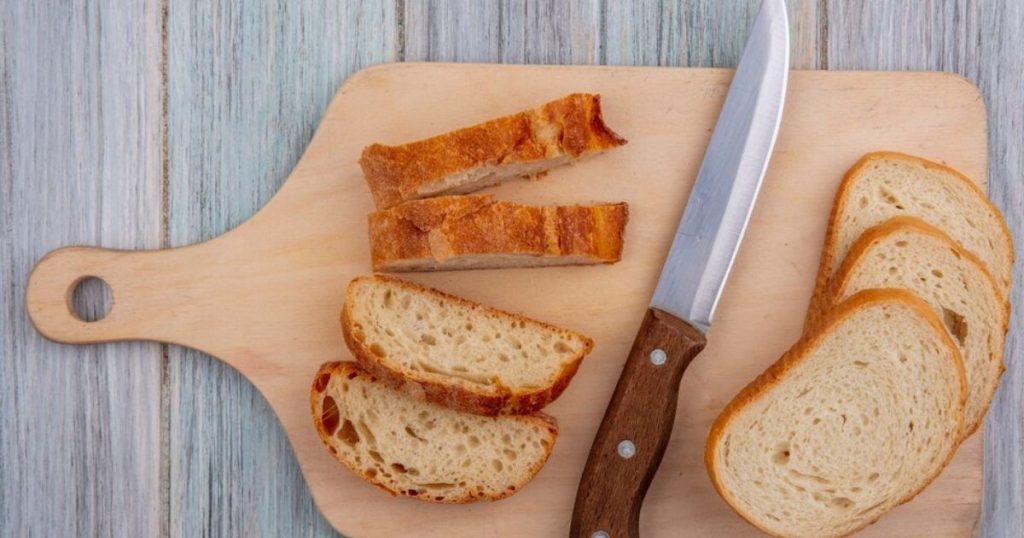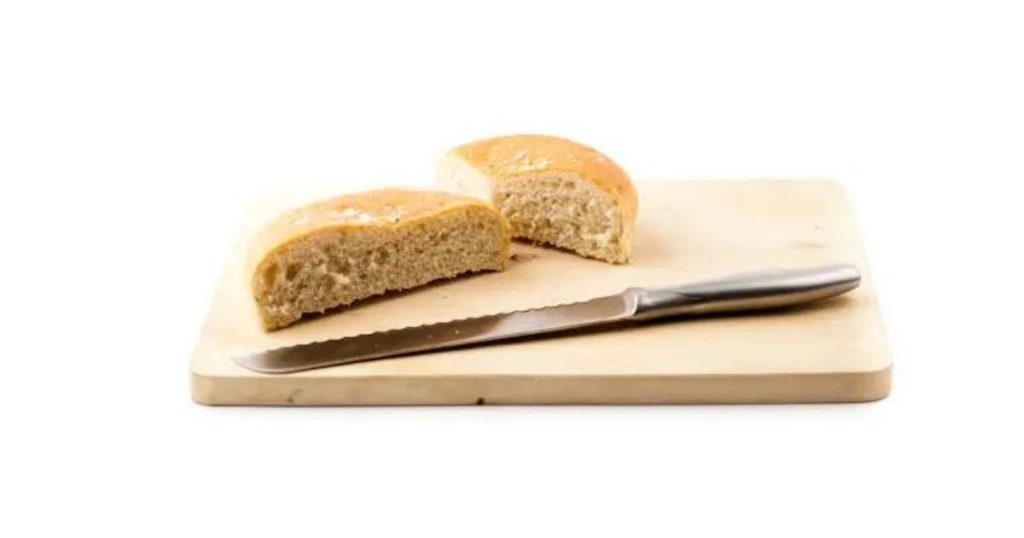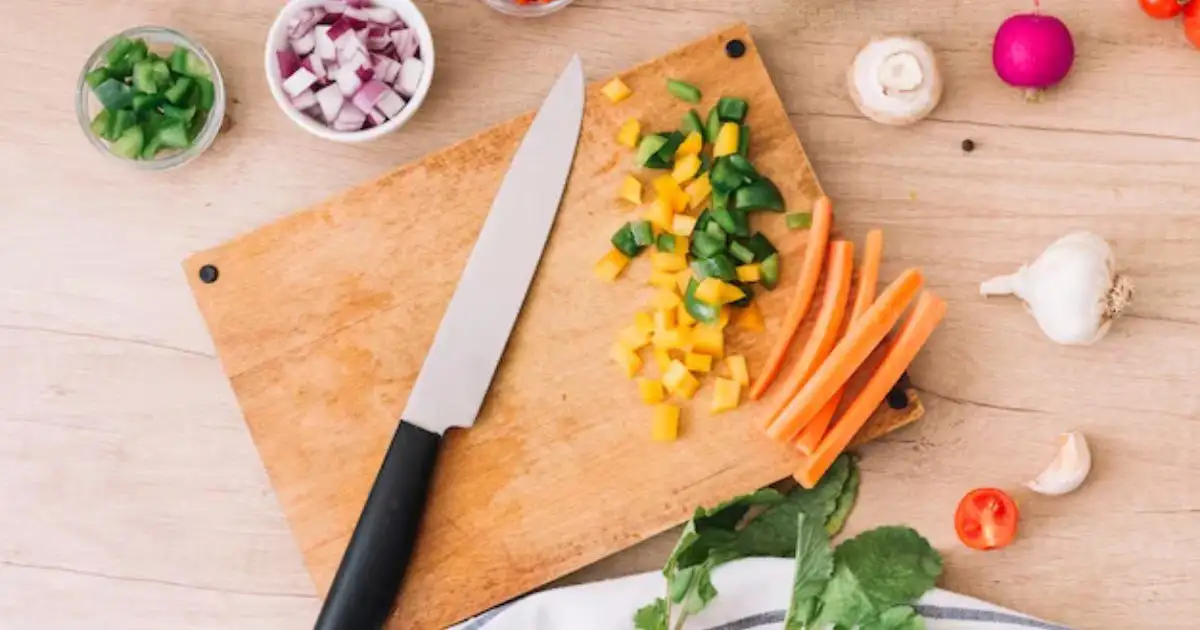Kitchen Hacks 2023: Can a Bread Knife Double as a Meat Cutter?
Table of Contents
ToggleIntroduction:
In the symphony of culinary arts, where precision is paramount and technique is everything, the choice of kitchen tools becomes a crucial decision for every home chef. Among the ensemble of knives that grace the countertops, the bread knife stands out as a specialist in slicing through the crustiest loaves with ease. However, as kitchen enthusiasts often find themselves multi-tasking, a common question emerges: Can a bread knife be a versatile companion, extending its skills beyond the world of bread to conquer the realm of meat
What are the types of knives and their purposes?
Here’s a breakdown of some common types of knives and their purposes:
Chef’s Knife:
Purpose: This multi-functional knife can be used for dicing, chopping, slicing, and mincing.
Blade: Wide and curved for easy rocking motion.
Paring Knife: Use: For precise operations, including peeling, trimming, and careful cutting.
Blade: narrow and short for improved handling.
Purpose: For precise operations including peeling, trimming, and careful cutting.
Blade: Narrow and short for improved
Bread Knife:
Purpose: Slicing bread and other baked goods without crushing them.
Blade: serrated to grip and cut through crusts.
Utility Knife:
Purpose: intermediate between a chef’s knife and a paring knife, suitable for various cutting tasks.
Blade: mid-sized and versatile.
Carving Knife:
Purpose: Slicing cooked meats, poultry, and roasts.
Blade: long, thin, and pointed for precise slicing.
Cleaver:
Purpose: Chopping through bones and hard vegetables.
Blade: heavy and broad with a flat edge.
Boning Knife:
Purpose: Remove bones from meat and fish.
Blade: thin and flexible for precision.
Fillet Knife:
Purpose: filleting and preparing fish.
Blade: thin and flexible for intricate cuts.
Vegetable Cleaver:
Purpose: Chopping and slicing vegetables.
Blade: similar to a cleaver but lighter and thinner.
Oyster Knife:
Purpose: Opening oysters and shellfish.
Blade: short and stubby with a strong tip.
What are the key features of a bread knife?

Here’s a description of a bread knife to cut meat:
Serrated Blade:
Bread knives have a serrated edge, which means the blade has a row of teeth along its edge. These serrations gripped and sawed through the crust of bread without squashing it.
Gentle sawing motion:
When using a bread knife for meat, employ a gentle sawing motion. This helps the serrations do their job in slicing through the tougher outer layer without tearing the softer interior.
Roasts and poultry:
Bread knives can be particularly useful for slicing through roasted meats, such as roast beef or crispy-skinned roast chicken. The serrations help to navigate through the crust without much effort.
Avoid Bones:
It’s important to note that bread knives are not designed for cutting through bones. They work best when slicing through the meat itself. If your meat dish includes bones, it’s advisable to use a proper boning knife or another suitable knife for that purpose.
Careful Handling:
While a bread knife can be versatile, it’s essential to handle it carefully when using it for meat. The serrations can catch on bone or gristle, so take your time and apply controlled pressure.
Is it suitable to use a bread knife for cutting meat?
Yet, in particular conditions, a bread knife can be used to cut firm kinds of meat, particularly those with a coating or crunchy external Here’s a guide on how to cut meat with a bread knife:
Select the right meat:
Select meats with a crispy or crusty exterior, such as well-cooked meat, secure meat, or meats with a baked crust. The jagged edge of a bread knife is more active in sharing these types of touches.
Allow the meat to rest.
Before cutting, allow the meat to rest for a small number of minutes. This allows the liquids to be reordered, making the meat extra tender and easier to cut.
Use a gentle sawing motion:
Employ a gentle sawing motion with the bread knife. Unlike straight-edged knives, the serrations on a bread knife work by sawing through the material rather than making a continuous slicing motion. Apply controlled pressure, letting the teeth of the knife do the work.
Slice Against the Grain:
Identify the direction of the meat fibres and slice against the grain. This helps in achieving cleaner cuts and makes the meat more tender to eat.
Avoid Bones:
Bread knives are not suitable for cutting through bones. If your meat dish includes bones, it’s essential to use a proper boning knife or another knife designed for cutting through bone.
Mind the Serrations:
Be mindful of the serrations catching on bone or gristle. Take your time and ensure a controlled cutting motion to prevent the knife from slipping or causing uneven cuts.
Clean Cuts:
If the meat has a particularly tough or crusty exterior, a bread knife can provide clean cuts without crushing the delicate interior. This is especially useful for roasts and certain grilled meats.
Regular Maintenance:
Keep the bread knife well-maintained by regularly sharpening the serrated edge. While sharpening serrated knives can be more challenging than sharpening straight-edged ones, there are special sharpening tools designed for serrated blades.
What benefits does using a bread knife offer when cutting meat?
While a bread knife is not the conventional choice for cutting meat, there are situations where it can offer certain advantages, especially when dealing with specific textures and crusty exteriors. Here are some potential advantages of using a bread knife for cutting meat:
Serrated Edge for Crusty Meats:
The primary advantage of a bread knife lies in its serrated edge. This design is particularly effective for slicing through the crusty or crispy exteriors of meats, such as well-cooked roasts or grilled meats. The serrations grip the surface, making it easier to cut without crushing the delicate interior.
Reduced Effort on Crusts:
The serrated edge allows for a sawing motion, reducing the effort required to cut through tough or crispy surfaces. This can be advantageous when dealing with meats that have a seared or crispy crust, as the serrations can navigate through the outer layer more easily than a straight-edged knife.
Versatility:
Bread knives are known for their versatility. While they are designed for bread, their serrated edges can make them adaptable to various cutting tasks. In situations where you may not have access to specialized meat-cutting knives, a bread knife can serve as a decent substitute.
Less Tearing on Tender Meat:
In particular, in suitcases, when traded with fond cuts of meat, a bread knife’s jagged advantage can be tenderer than a straight-edged knife. This is mainly true when the meat is cooked to excellence, and a little is needed to preserve its sensitivity.
Convenience in Certain Situations:
In circumstances where you may not have admission to a faithful meat knife, a bread knife can be a suitable and useful instrument. Its ability to handle a change in cutting responsibilities makes it a useful choice when working in a less-equipped kitchen.
What are the limitations and challenges associated with using a bread knife?
Here are some potential drawbacks:
Lack of precision:
Bread knives typically have a wider blade and are not designed for precise cuts. When used on meat, especially for tasks like filleting or intricate butchering, they may lack the precision that a dedicated meat knife, such as a boning knife, can provide.
Not Ideal for Bones:
Bread knives are not suitable for cutting through bones. Attempting to cut through bones with a bread knife can damage the blade, making it less effective for its intended purpose of slicing through soft bread without crushing it.
Potential for Uneven Cuts:
The serrated edge of a bread knife, while effective for certain textures, can lead to uneven cuts on softer meats. It may tear or shred the meat, compromising its presentation and texture.
Potential for Slipping:
The sawing motion required when using a bread knife on meat may increase the risk of the knife slipping, especially if the surface is uneven or if the user is not experienced with this cutting technique. This poses a safety concern.
Risk of Crushing Softer Meats:
While a bread knife can be effective on crusty exteriors, it may not be the best choice for very tender cuts of meat. The serrations can potentially crush the delicate texture rather than provide a clean cut.
Maintenance Challenges:
Maintaining the sharpness of a serrated edge requires specific tools, and some users may find it more challenging to maintain a bread knife compared to a traditional straight-edged knife.
What are some tips for effectively using a bread knife to cut meat?

Here are particular tips to save attention when using a bread knife for cutting meat:
Choose the right meat:
Bread knives are most effective on meats with a crust or crispy exterior. Opt for cuts like well-cooked roasts, grilled meats, or those with a seared crust for the best results.
Identify the grain:
Determine the direction of the meat fibres and slice against the grain for cleaner cuts. Slicing against the grain helps maintain the meat’s tenderness.
Gentle sawing motion:
Use a gentle sawing motion with the bread knife. Allow the serrated edge to do the work, and avoid applying excessive pressure, especially if the meat is tender.
Angle the knife:
Angle the bread knife slightly while cutting. This can enhance the sawing action and help the serrations navigate through the crust or exterior of the meat more effectively.
Avoid Bones:
Bread knives are not designed for cutting through bones. If your meat dish includes bones, use a proper boning knife or another knife designed for bone cutting.
Clean the blade regularly.
Clean the blade regularly while cutting to remove any residue, especially if the meat has a sticky or crusty exterior. This helps maintain the knife’s effectiveness.
Stabilize the meat:
Hold the meat steady with one hand while using the bread knife with the other.
Be mindful of safety.
Always exercise caution when using any knife. The sawing motion of a bread knife can be effective, but it also increases the risk of slipping. Pay attention to your technique and work on a stable surface.
Consider Alternatives for Precision:
For tasks requiring more precision or when dealing with softer cuts of meat, consider using a dedicated meat knife, such as a chef’s knife, carving knife, or boning knife.
Regular Maintenance:
Keep the bread knife well-maintained. Regularly clean and sharpen the blade to ensure optimal performance.
Pros and cons of bread knife:
Pros:
- Effortless Slicing: Bread knives feature a serrated edge that easily cuts through crusty or soft bread without squishing the interior.
Versatility: Besides bread, these knives can be used for delicate items like tomatoes and cakes, showcasing their versatility.
Low Maintenance: Serrated edges stay sharper for longer periods, reducing the frequency of sharpening compared to traditional straight-edged knives.
Reduced Crumbs: The serrated design minimizes crumbs during slicing, making it a cleaner option for cutting bread on the table.
Adaptability: Available in various sizes and styles, from small paring knives to long, slicing knives, offering options for different types of bread and tasks.
Cons:
Limited Precision: Serrated edges can make precise cuts challenging for certain tasks that require fine, straight cuts.
Sharpening Complexity: While they stay sharp longer, sharpening serrated knives can be more complex and may require professional services or specialized tools.
Not Ideal for All Foods: While great for bread and certain fruits, serrated knives are not the best choice for all cutting tasks, such as chopping vegetables.
Potentially Fragile: The serrations make the blade more delicate than traditional knives, making it important to use them appropriately and avoid twisting or prying.
Initial Cost: High-quality bread knives can be relatively expensive compared to basic kitchen knives, though they are often considered a worthwhile investment.
Conclusion:
In the diverse world of kitchen cutlery, the question of whether a bread knife can successfully transition from slicing through crusty loaves to delicately cutting through various types of meat has been thoroughly examined. As we conclude our exploration, it becomes evident that while a bread knife can indeed exhibit versatility in the realm of meat cutting, it is not without its limitations.
The serrated edge of a bread knife proves advantageous in handling tough cuts of meat, reducing friction, and providing a uniform slicing experience. Its cost-effectiveness and space-saving attributes may appeal to home cooks seeking multi-purpose tools. However, challenges arise when faced with precision tasks, bones, or meats with softer textures, highlighting the need for alternative knives designed for specialized purposes.
Ultimately, the decision to use a bread knife for meat cutting hinges on the type of meat, the desired outcome, and the cook’s comfort and familiarity with the tool. It is crucial to acknowledge that while a bread knife can be a handy addition to the kitchen toolkit, there are instances where dedicated meat knives may be more appropriate for achieving optimal results.
FAQS
Can I use a bread knife to cut through bone-in meats?
Answer: It is not optional to use a bread knife for cutting finished frames, as the notched edge is calculated for softer touches, and trying to cut through bones may harm the blade.
Is it safe to use a bread knife on raw meats like chicken or beef?
Answer: Though a bread knife can be used on fresh meats, it is central to the repetition of correct food security events and safeguards that the knife is carefully cleaned between different types of meats to dodge cross-contamination.
Can a bread knife handle slices through tougher cuts of meat, like roasts or steaks?
Answer: Yes, a bread knife can be effective in slicing through tougher cuts of meat due to its serrated edge, which reduces friction and allows for smoother cutting. However, alternative knives may offer more precision for certain cuts.
What types of meat are best suited for a bread knife?
Answer: Bread knives are well-suited for cuts with tougher textures, such as roasts, briskets, or certain cured meats. Meats with crusty exteriors can benefit from the serrated edge, providing cleaner slices.
Can I improve a bread knife with a notched advantage?
Answer: Improving a bread knife with a saw-like edge can be interesting and may require attentive tools. It’s recommended to consult the manufacturer’s guidelines or seek professional sharpening services to maintain the knife’s performance.




